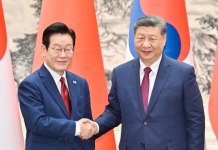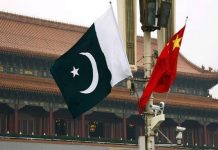From Our
Correspondent
Beijing: Xu Yue, who cultivates fruit and vegetables on a 5.3-hectare farm in Beijing’s Tongzhou district, used to spend a lot of money on organic fertilizer each year, but government subsidies have now eased the burden.
“With subsidies from the government, we only have to pay one-seventh of the original price for organic fertilizer this year,” Xu said.
He has bought 25 metric tons of organic fertilizer, with each ton costing him just 120 yuan ($17.20) as a result of the subsidies. That has substantially reduced the cost of producing organic food, and Xu has been able to extend organic farming practices to more than a third of the farm this year.
The district’s agricultural authority expects to subsidize the use of organic fertilizers on more than 1,300 hectares of farmland this year to help farmers practice organic farming and develop sustainable agriculture. The subsidies are also expected to reduce the use of synthetic fertilizers in the district by 28 percent compared with the amount used in 2015.
Efforts to promote green agriculture have intensified across China in recent years and the Ministry of Agriculture and Rural Affairs says progress is being made, with the use of synthetic fertilizers and pesticides falling for three years in a row.
“We should make more efforts to improve the quality in the supply of agricultural products and attach importance to sustainable development,” President Xi Jinping said at a meeting in Beijing in March 2017 during the annual sessions of China’s top legislature and top political advisory body.
On multiple occasions, Xi, who is also general secretary of the Communist Party of China Central Committee and chairman of the Central Military Commission, has stressed the importance of ecological conservation in developing agriculture.
During an inspection tour of Jilin province in July, the president visited a demonstration zone for green food production in Lishu county, Siping, to learn about the improvement of the area’s black, humus-rich chernozem soil and the growing of corn, and he stressed that effective measures must be taken to protect black soil.
Northeast China, one of the world’s three major chernozem regions, is a major area for maize and soybean farming. The black soil produces high yields but declining soil fertility was a problem, Xi noted.
The practice of returning maize straw to the farmland for mulching purposes not only increased the amount of organic matter in the soil but also helped prevent wind-and water-driven soil erosion and preserve soil moisture, Xi said, adding that such a model was worth promoting.






